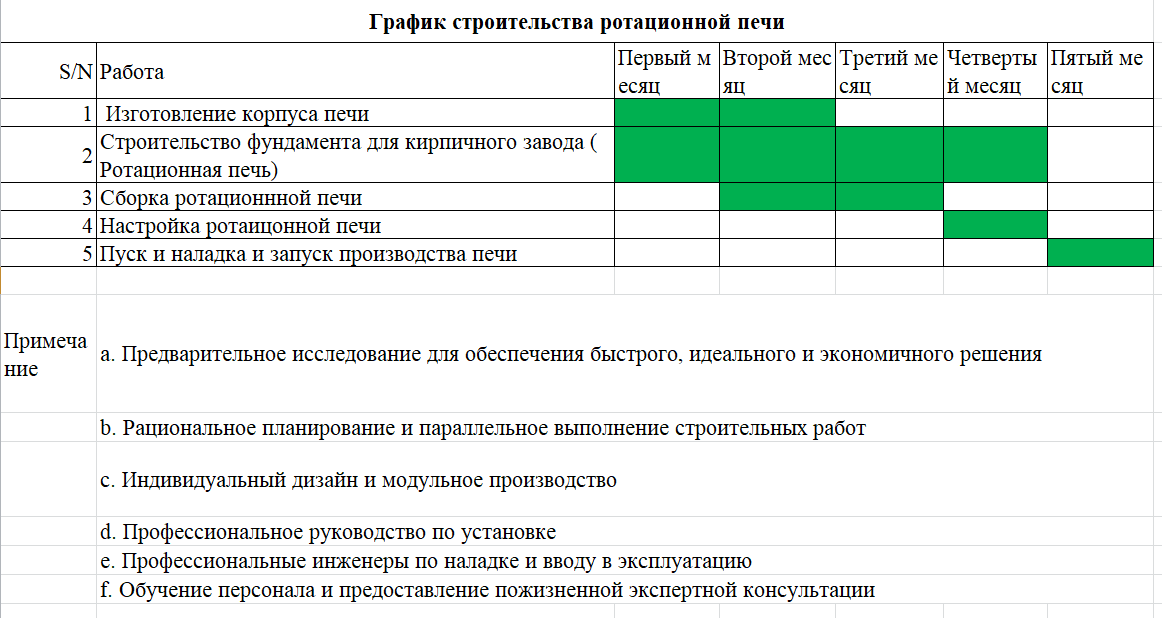Welcome: ООО «Автоматизированное Оборудование Сучжоу Bricmaker»

Ротационно-туннельная печь для обжига красного кирпича и керамической плитки
1. Краткое описание:
Вращающаяся печь, также называемая Ротационно-туннельной печью, представляет собой новый тип обжиговой печи, где кирпичи остаются неподвижными, а движется сама печь. Корпус вращающейся печи перемещается по кольцевому рельсу диаметром 80–120 м. Печь разделена на участки: сушка, предварительный нагрев, обжиг, термоизоляция и охлаждение, общая длина составляет около 100–120 м.
На незанятой части кольцевого рельса передвижная платформа с формовочным станком движется в том же направлении, что и печь, одновременно формируя и укладывая кирпичи. Печь движется со скоростью 70–120 м/день, постепенно загружая сырец на входе и выдавая готовый кирпич на выходе, проходя через все этапы: укладка, сушка, предварительный нагрев, обжиг, охлаждение и выгрузка кирпичей.
В отличие от традиционной тоннельной печи, кирпичи укладываются на кольцевую основу, и весь процесс осуществляется за счет движения печи, что исключает необходимость в вагонетках и сопутствующем оборудовании.

2. Основная структура вращающейся печи:
Ротационно-туннельная печь состоит из следующих основных частей: металлическая конструкция корпуса печи, внутренний слой, система подачи воздуха, система вытяжки, система удаления влаги и система привода.
2.1 Металлическая конструкция корпуса печи:
Корпус печи опирается на колеса, расположенные под боковыми стенами. Колеса движутся по рельсам, расположенным в нижней части, приводя корпус печи в движение вперед. Стены и верхняя часть корпуса изготовлены из стальных листов и профильного металла, которые соединяются съемными сегментами. Каждая секция производится на заводе и собирается на месте, что облегчает ремонт и снижает объем строительных работ на объекте. Из-за значительной длины корпуса печи термическое расширение может вызывать деформацию, затрудняя движение. Для предотвращения этого в конструкции предусмотрены специальные элементы, компенсирующие тепловое расширение, что обеспечивает нормальную работу печи без деформаций.
Верх корпуса выполнен плоским, а несущие балки учитывают возможное провисание на больших пролётах, что может привести к деформации и обрушению потолка печи. Для этого проводится анализ нагрузки, чтобы деформация соответствовала государственным стандартам.
Для герметичности между корпусом печи и окружающей средой используется песчаное уплотнение. Его качество напрямую влияет на энергопотребление печи и качество обжига, поэтому конструкции и материалы уплотнения требуют особого внимания при проектировании.

2.2 Материалы внутреннего слоя
Стены и потолок корпуса выкладываются модулями из алюмосиликатного волокна. Для экономии инвестиций в зависимости от температурных зон используются модули с разными характеристиками.
Дно под штабелями обязательно выкладывается жаропрочным кирпичом, устойчивым к давлению, чтобы предотвратить аварии из-за разрушения печи.

2.3 Системы подачи воздуха, вытяжки и удаления влаги:
Система подачи воздуха: Холодный воздух из зоны охлаждения направляется для утилизации тепла, выделяемого при охлаждении кирпича. Этот нагретый воздух используется для сушки сырца и для горения топлива.
Система вытяжки: Нагретый воздух и дымовые газы из зоны предварительного нагрева отводятся и используются в зоне сушки.
Система удаления влаги: Влажный горячий воздух, выделяемый при сушке сырца, удаляется из печи наружу.
Эти три системы взаимосвязаны. Ключевым моментом является правильный выбор объема и давления воздуха. Объем воздуха рассчитывается на основе теплотехнических расчетов. Давление воздуха определяется расчетом сопротивления газов внутри печи.
При неправильном выборе параметров вытяжки вся система может работать некорректно, что напрямую влияет на качество обжига кирпича. Размеры сечений трубопроводов также должны быть оптимальными: слишком маленькие сечения могут вызывать перегрузки, а слишком большие – нерациональный расход материалов.
Скорость газа в трубопроводах выбирается в диапазоне 8–12 м³/с, а на каждом участке устанавливаются регулирующие клапаны для повышения гибкости системы.
2.4 Приводная система:
Приводная система – ключевой элемент для успешной работы печи. В конструкции используется ведущий ролик, приводящий в движение ведомый. Корпус печи разделен на несколько секций, каждая из которых оснащена одним ведущим роликом, а остальные – ведомыми.
При выборе мощности редуктора учитывается возможная деформация корпуса или повреждение печи со временем. Рекомендуется увеличивать мощность электродвигателя для учета длительной эксплуатации.
3. Brick production process of movable tunnel kiln:
a.Цех для обработки сырья

c.Цех для производства кирпича




4. Наши услуги:
(1)До строительства: Проведение предварительной оценки местных ресурсов, климатических условий и геологии для подготовки к инвестированию в строительство завода. Предоставление инвестиционного калькулятора и бюджета на операционные расходы, чтобы помочь инвесторам эффективно распределять средства и прогнозировать будущие расходы.
(2)Во время строительства: Разработка полного технологического процесса мобильной тоннельной печи, учитывая индивидуальные потребности клиента и особенности оборудования. Предоставление рекомендаций по планировке кирпичного завода и выбору соответствующего оборудования.
(3) После установки: Обеспечение поддержки клиентов на протяжении всего срока эксплутации печи. Строгое соблюдение гарантийных обязаиельств, предусмотренных контрактом.
Обучение квалификацированных специалистов на производственных этапах, с их последующей аттестацией до полного соответствия стандартам.
Обучение высококвалифицированных менеджеров кирпичных заводов для повышения управленческих навыков и эффективности работы предприятия.
Создание постоянного технического взаимодействия между клиентами и экспертами.

Видео работы ротационной печи:
Имя: General Manager
мобильный:+8613151630928
Тел.:+8613222235952
Whatsapp:+8613222235952
Почта:sales@bricmaker.com
Добавлять: Китай, провинция Цзянсу, город Чжанцзяган, улица Восточная Лай Хуаю, дом 1.
We chat
